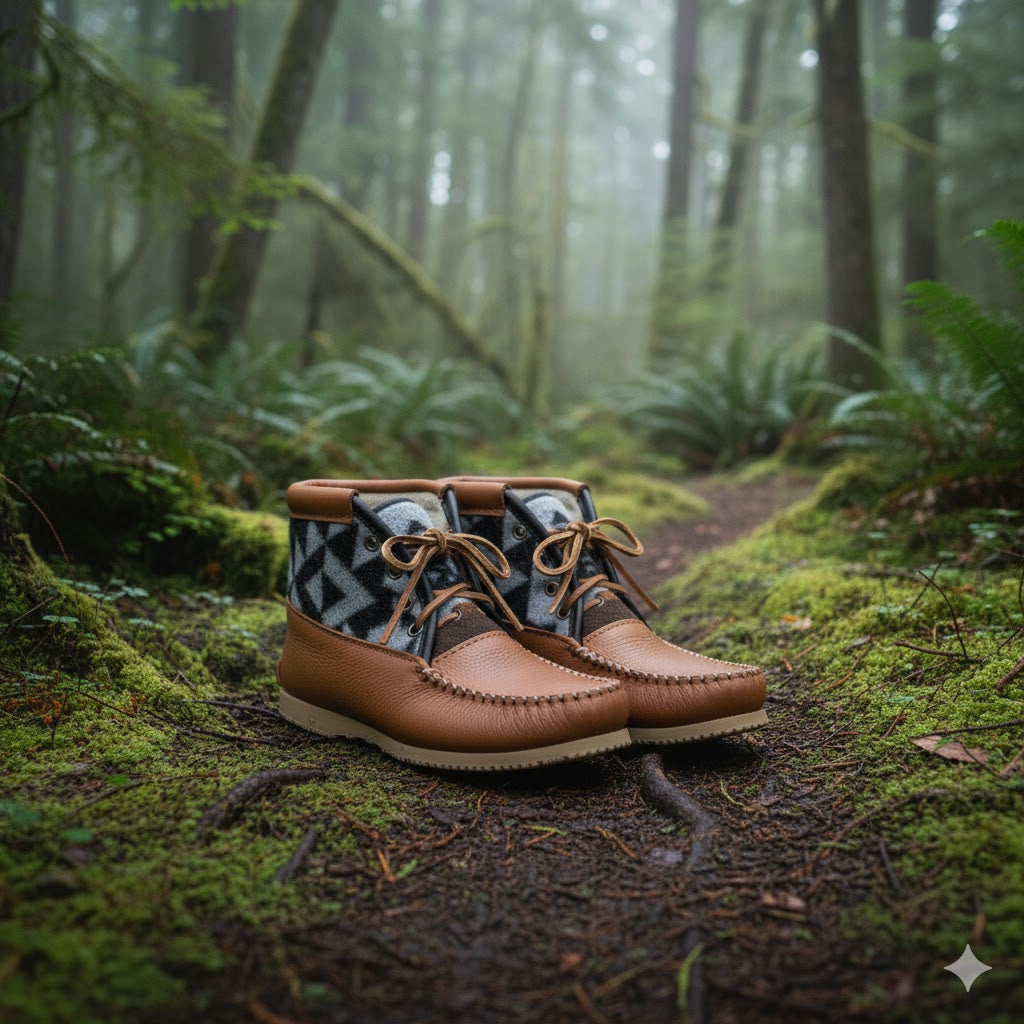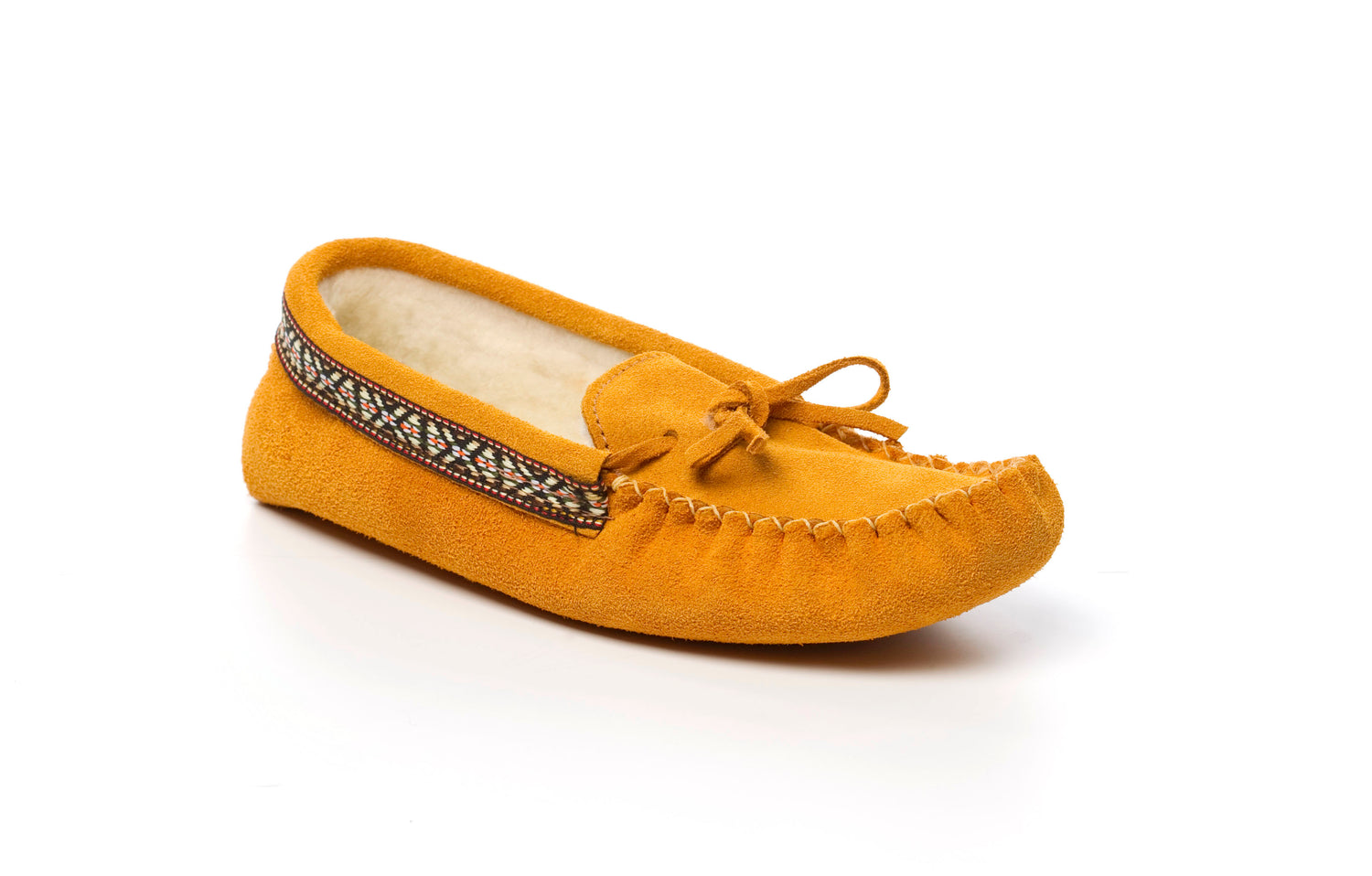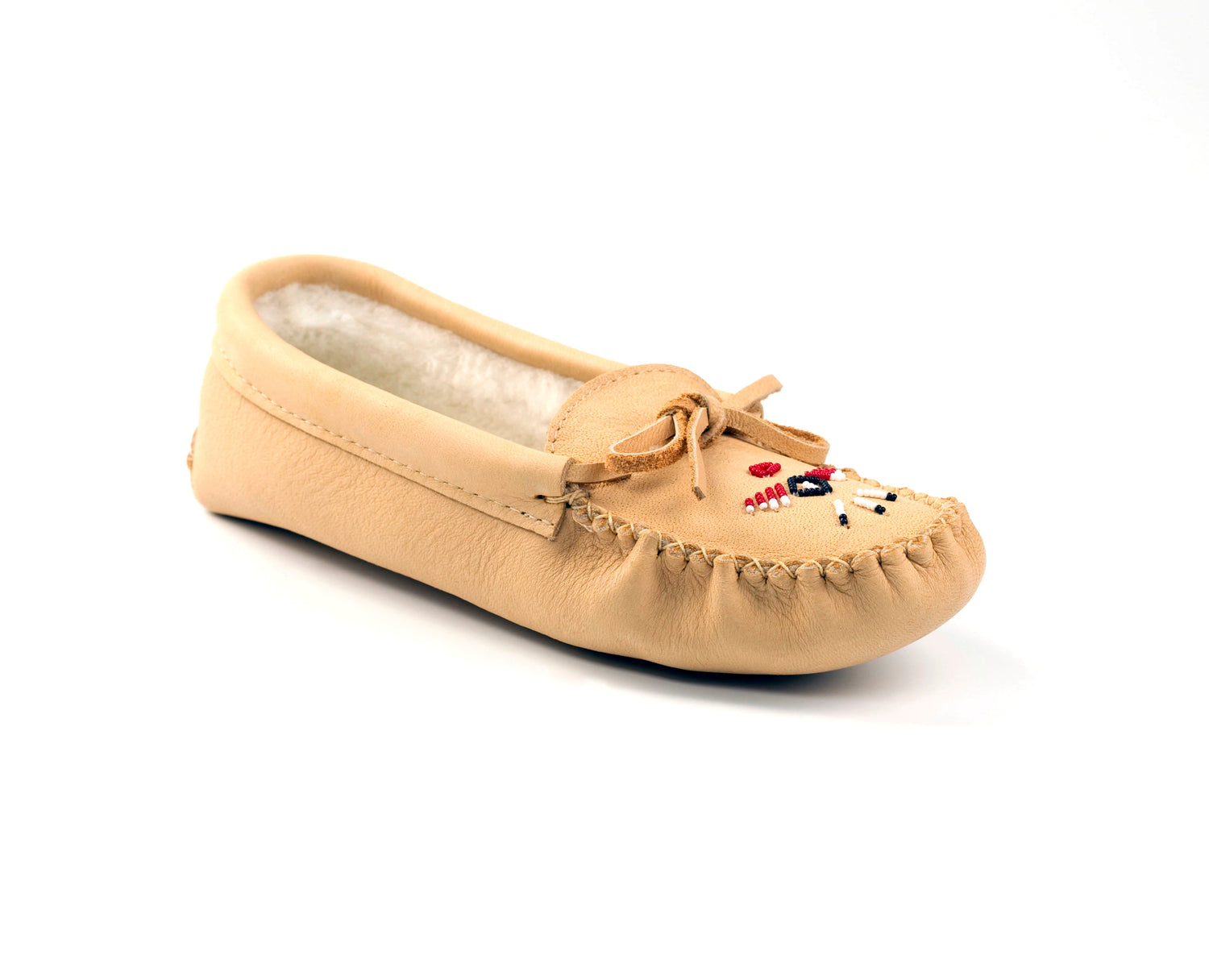
Beyond the Basic Slipper: A Journey Through Moccasin Styles
Share
Beyond the Basic Slipper: A Journey Through Moccasin Styles
When you hear "moccasin," you might immediately think of a simple, comfortable slipper. While that's certainly a beloved form of this iconic footwear, the world of moccasins and their related traditional designs is far richer and more diverse than many imagine! Rooted deeply in Indigenous cultures across North America, these handcrafted shoes tell stories of heritage, environment, and ingenuity.
Let's embark on a journey to explore some of the distinct and beautiful varieties, highlighting their unique features and the traditions they represent.
1. The Classic Moccasin (Soft-Soled & Hard-Soled) The most foundational type, often characterized by a soft, flexible sole (sometimes just a continuation of the upper leather) and an upper piece gathered or stitched to the vamp.
-
Soft-Soled: Ideal for indoor
 use, offering unparalleled comfort and quiet movement. Many contemporary slipper moccasins derive from thisstyle.
use, offering unparalleled comfort and quiet movement. Many contemporary slipper moccasins derive from thisstyle.
-
Hard-Soled: Historically developed for rougher terrain, often featuring an added rawhide sole. These were practical for walking outdoors and enduring harsher conditions.
2. Papoose Moccasins This term usually refers to very small, soft-soled moccasins designed for infants and toddlers.
-
Key Feature: Extremely soft and flexible, often made from supple leather or suede, sometimes lined with fleece or fur for extra warmth. They are designed to protect tiny feet without restricting natural development.
-
Cultural Significance: Often given as gifts to newborns, symbolizing protection and connection to ancestral traditions.
3. Rabbit Fur Moccasins (and other Fur-Trimmed Styles) While not a specific construction type, the addition of fur transforms a basic moccasin into a luxurious and incredibly warm piece of footwear. Rabbit fur is a popular choice due to its softness and availability.
-
Key Feature: The fur (often rabbit, but also beaver, fox, or sheepskin) typically trims the opening of the moccasin or lines the interior, providing exceptional insulation and a distinctive plush look.
-
Practicality: Perfect for colder climates, offering superior warmth whether used as a slipper or for light outdoor wear.
4. Concho Boots (Moccasin-Style Boots with Conchos)
"Concho" refers to decorative metal discs, often sterling silver, that are a hallmark of Southwestern Indigenous and Western American artistry.
-
Key Feature: These are
 typically moccasin-style boots, often calf or knee-high, adorned with multiple conchos down the side or across the vamp. The leather is often natural or earthy tones.
typically moccasin-style boots, often calf or knee-high, adorned with multiple conchos down the side or across the vamp. The leather is often natural or earthy tones.
-
Aesthetic: They embody a rugged elegance, blending traditional moccasin construction with iconic Southwestern embellishments.
5. Navajo Boots (often Moccasin-Style) While "Navajo boot" can describe various styles, it often refers to distinct Indigenous-made boots from the Navajo (Diné) people of the Southwestern United States. These can incorporate moccasin construction principles.
-
Key Feature: May feature a soft or hard sole, often with specific stitching patterns, sometimes adorned with silverwork, turquoise, or distinctive embroidery unique to Navajo artistry. They can range from ankle to knee-high.
-
Cultural Significance: Reflect the rich artistic traditions and practical needs of the Navajo people, designed for comfort and durability in the high desert landscape.
These examples just begin to scratch the surface! Turn the page to discover even more intriguing types of traditional footwear and their remarkable differences.
Mukluks, Muck Boots, and Beyond: A Deeper Dive into Indigenous Footwear
Continuing our exploration of traditional footwear, we move into styles designed for more extreme conditions, showcasing incredible adaptability and craftsmanship.
6. Mukluks (Kamik) Mukluks, also known as Kamik, are soft, insulated boots traditionally worn by Arctic Indigenous peoples (like Inuit and Yup'ik).
-
Key Feature: Characterized by soft soles, often made from sealskin or caribou hide, and uppers (legs) made from various animal hides and furs (such as caribou, seal, or rabbit). They are designed to be extremely lightweight and provide exceptional warmth in sub-zero temperatures. The soft sole allows for better feel and traction on snow and ice.
-
Construction: Often consist of multiple layers – an inner liner (sometimes felt or fur), an outer hide, and sometimes a waterproof bottom. They are laced up to ensure a snug fit and prevent snow entry.
-
Purpose: Primarily designed for deep cold and walking on snow and ice, offering breathability to prevent frostbite.
7. Muck Boots (or Wet-Weather Mukluks) While "Muck Boot" in modern terms often refers to a brand of waterproof rubber boots, in traditional Indigenous contexts, it refers to a type of mukluk specifically designed for wet conditions.
-
Key Feature: These traditional "muck boots" would typically feature waterproofed hides (like sealskin) on the lower part of the boot, sometimes with rubberized bottoms, to withstand slush, mud, and water, particularly during spring thaw or coastal hunting.
-
Distinction: Differs from the dry-snow focused mukluk by emphasizing water resistance rather than just dry insulation.
8. Métis Moccasins/Gauntlets The Métis people, known for their vibrant culture, often combine European and Indigenous techniques in their artistry, including their footwear.
-
Key Feature: Métis moccasins can be incredibly ornate, often featuring intricate floral beadwork (inspired by European embroidery but with a distinct Métis flair) on the vamp or gauntlet (the extended ankle/calf portion). They blend practical design with stunning artistic expression.
-
Materials: Typically made from moose hide or deer hide, often lined with fur for warmth.
Why These Differences Matter The variations in moccasins, mukluks, and related boots are not merely stylistic; they are deeply functional. Each design element – from the type of hide and fur to the sole construction and height – was developed in response to specific environmental challenges, available resources, and cultural practices.
Today, while many modern versions incorporate contemporary materials and soles for convenience, they still carry the spirit of generations of Indigenous craftsmanship. When you choose a pair of moccasin-style footwear from Sheepskin and Things, you're not just buying a shoe; you're investing in a piece of comfort, heritage, and timeless design. Understanding these distinctions allows us to appreciate the rich history and thoughtful engineering behind every stitch and seam.





